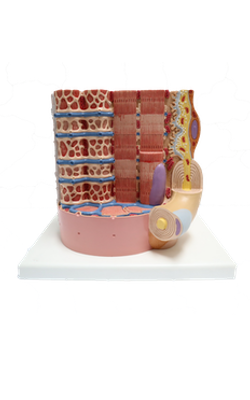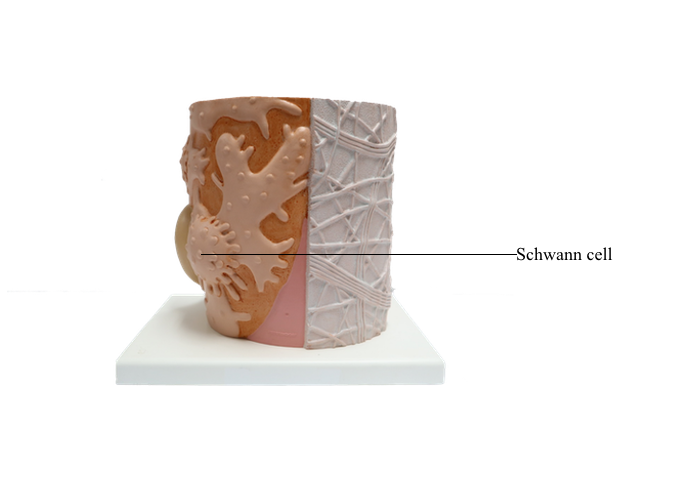Main Model

Posterior : Schwann cell

Nervous Tissue and Nervous System
Nervous tissue, the most complex of the four basic tissues, is composed of nerve cells, the neurons, and supporting cells, the neuroglia. Unlike other basic tissues, the nervous tissue almost lacks intercellular substance. Anatomically, the nervous system can be divided into the central nervous system (CNS) and the peripheral nervous system (PNS). The CNS consists of the nervous tissue of the brain and spinal cord; the PNS is composed of all other nervous tissue outside the CNS. The PNS collects information from the body surface, viscera, and special sense organs such as eyes and ears, and transmits signals to the CNS where this information is integrated and analyzed to produce appropriate responses in various effector tissues or organs. All these activities are carried out by the neurons, which form an integrated communication network by way of specialized contacts, the synapses.
The neuron is the structural and functional unit of nervous tissue. It is composed of a cell body and its processes, dendrites and axons. The nerve fibers, collections of dendrites or axons, are classified as either myelinated or unmyelinated fibers. Myelin sheaths of myelinated fibers are formed by oligodendrocytes in the CNS and by Schwann cells in the PNS. The unmyelinated fibers are nude in the CNS, but are invested by a layer of cytoplasm of Schwann cell in the PNS. In addition to the functions of receiving stimulus and conducting nervous impulse, some neurons of the brain stem secrete hormones.
The neuroglia are 10 times more numerous than neurons. They have an important role in supporting, protecting, and nourishing the neurons. They surround the cell bodies of the neurons and their processes, filling the intercellular spaces. According to their structures and functions, the neuroglia are classified as astrocytes, oligodendrocytes, microglia, ependymal cells, and Schwann cells.